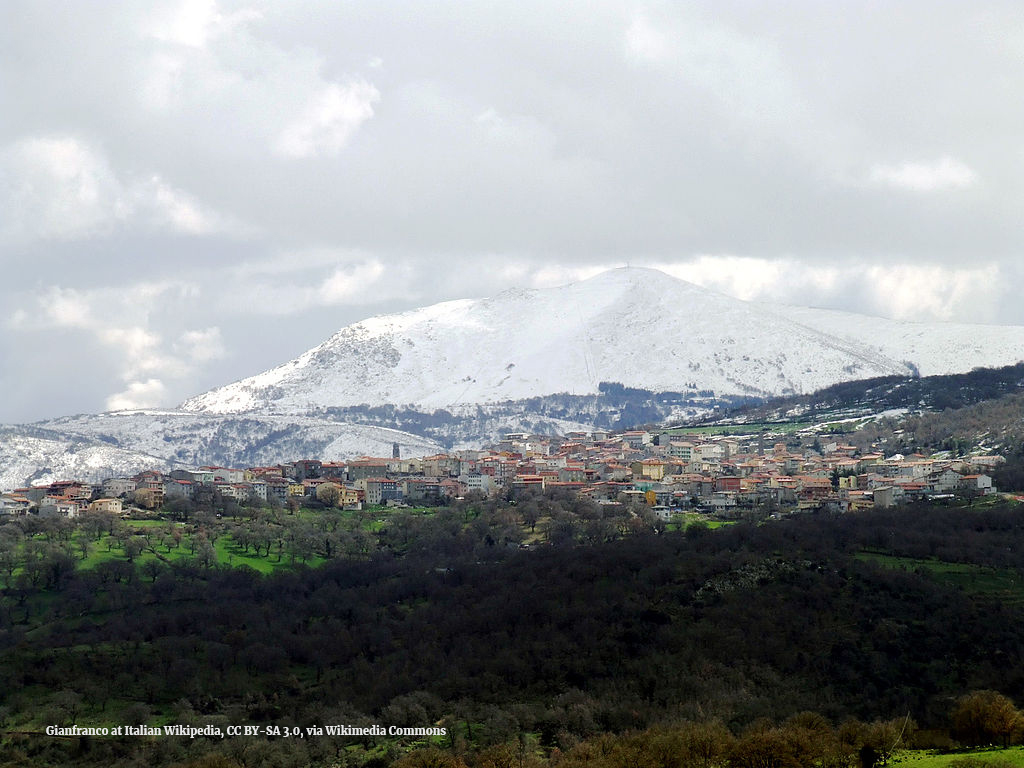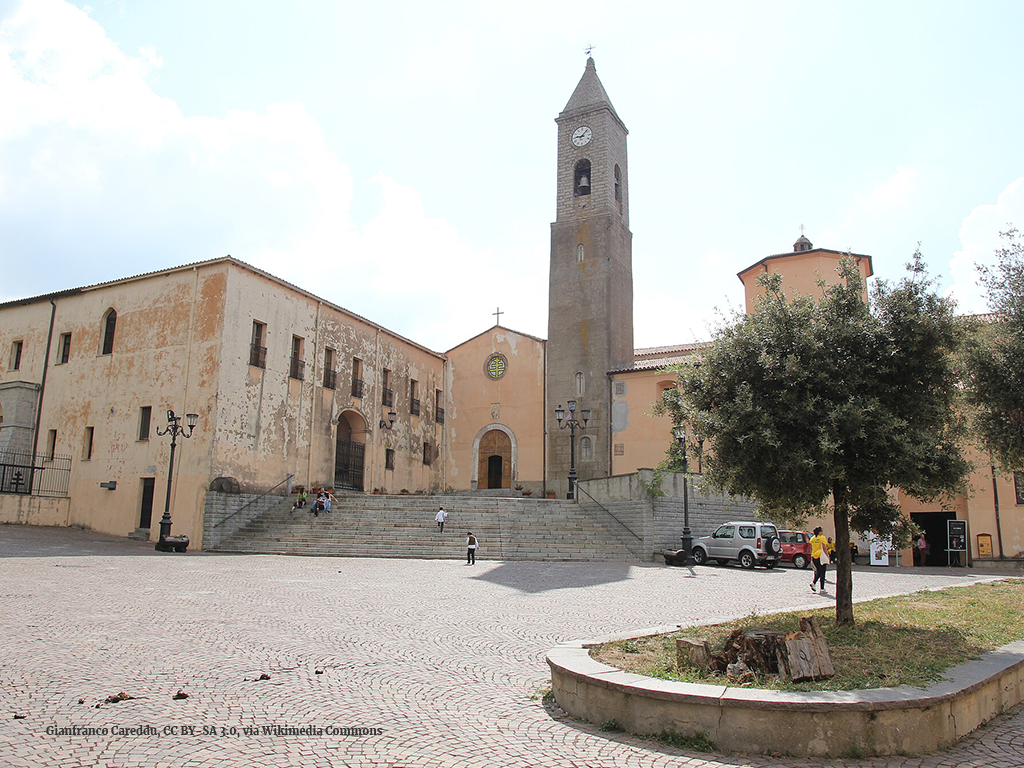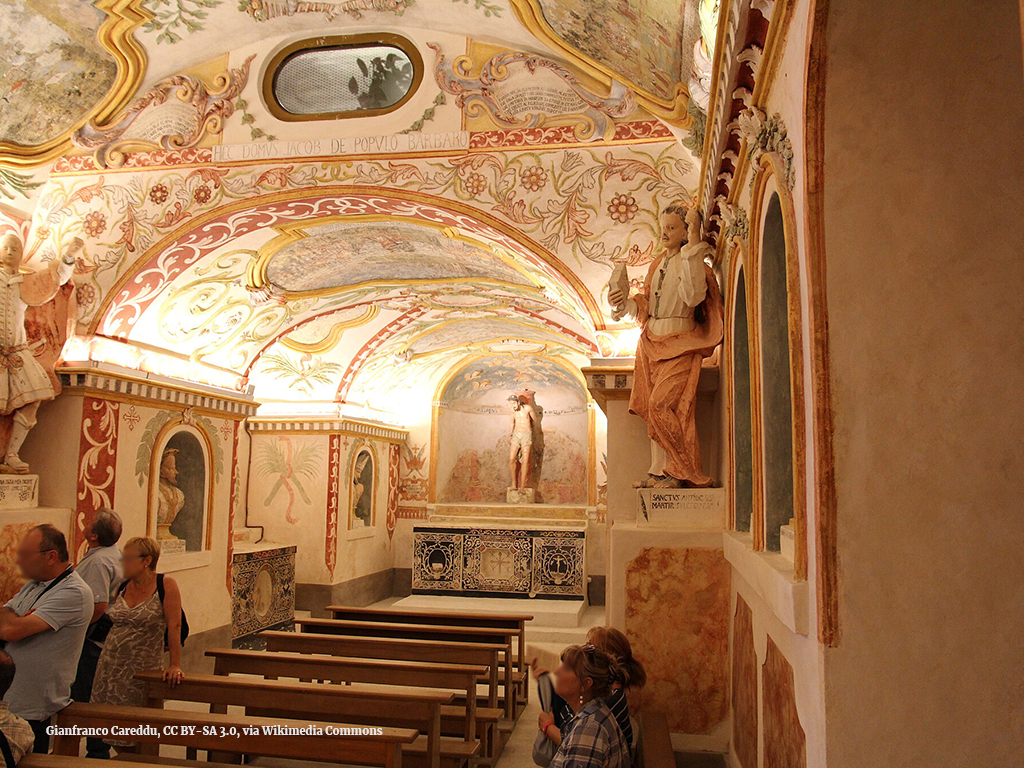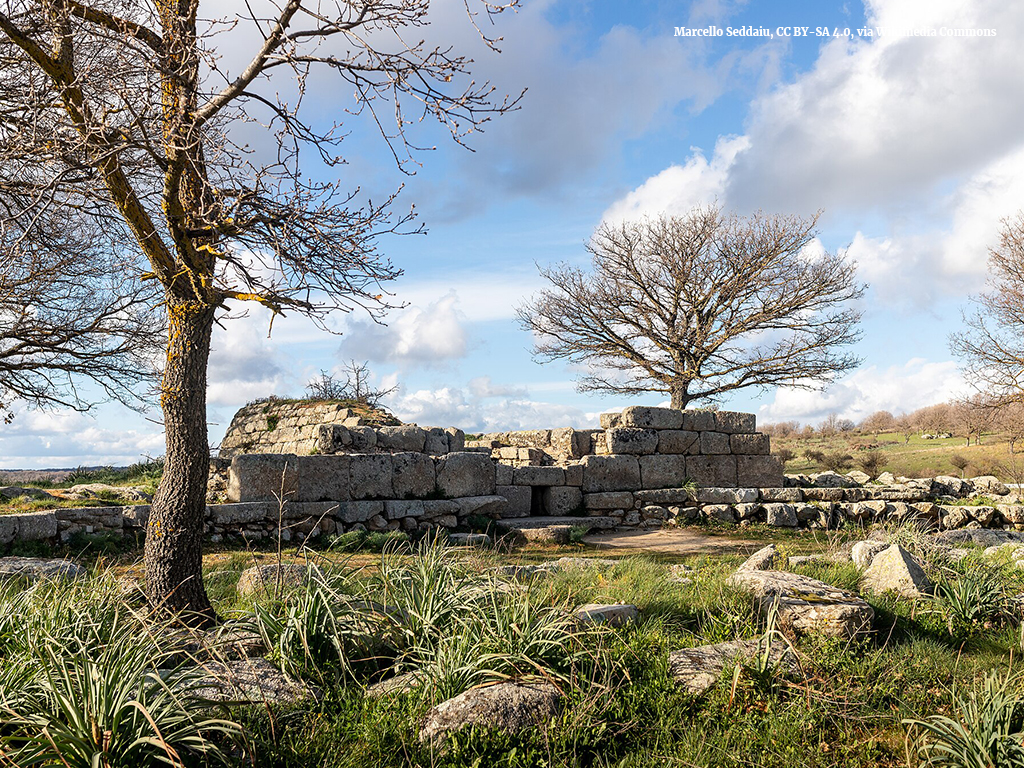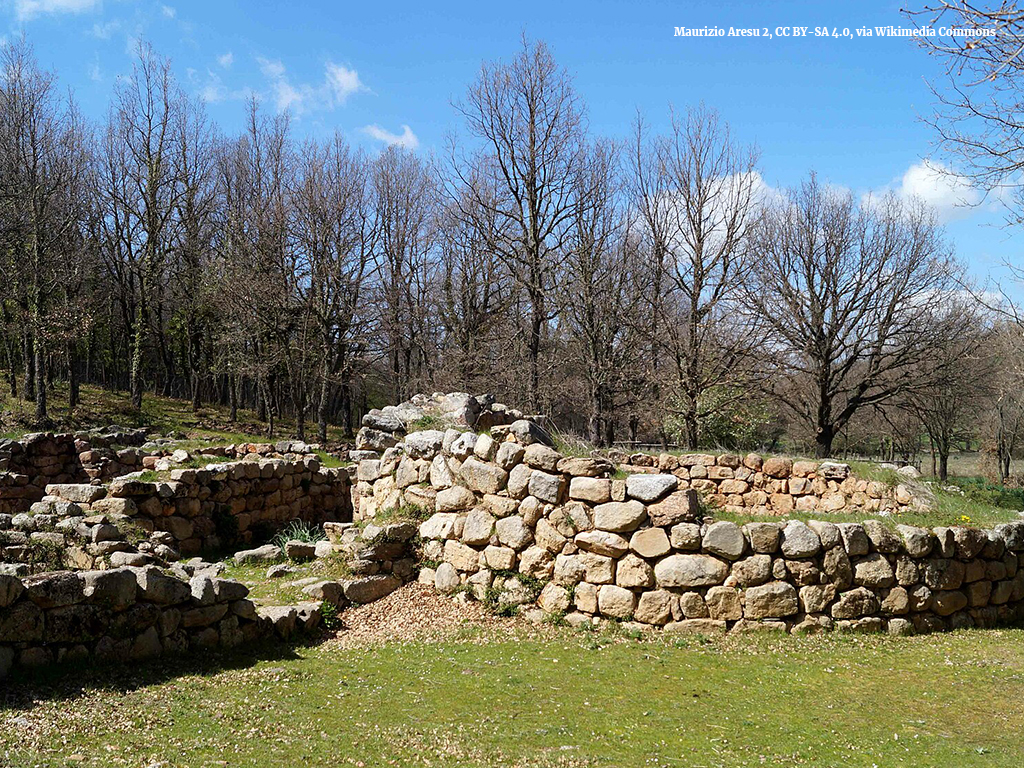-
“A fabulous horizon surrounds the village: the towering mountains of Gennargentu, with peaks shining almost silver-edged, dominate the vast valleys of Barbagia, rising like immense gray and green shells up to the ridges where Fonni, with its shard-like houses and stone alleys, challenges the winds and lightning”
Grazia Deledda, Cenere (Ashes), ed. Ilisso, 2005, p.13
How to get there
By bus
Bus lines 502 Fonni – Abbasanta, 512 Fonni – Oristano, 525 Fonni – Ottana. ARST bus lines 433 Nuoro-Cagliari (and vice versa), 505 Sorgono – Nuoro, 506 Belvì – Nuoro, 9138 Orroli – Nuoro make stops in Fonni.
By car
From the South, take the SS131 Carlo Felice road and follow it to the Nuoro – Macomer exit, then join the SS129 Trasversale Sarda Macomer – Nuoro road. From the North, take the SS131 Carlo Felice road and follow it to the Nuoro – Ghilarza exit, then join the SS131 D.C.N. road, where there are signs indicating Nuoro Superstrada – Olbia and Nuoro Badu e’ Carros, and continue to the main entrance of Nuoro. Do not enter the city but follow the signs for Tortolì and take the SS389 Var Nuoro-Lanusei road and, after about 18 km, take the exit “Fonni-Ovodda-Aritzo-Sorgono” and after a few kilometers, you will reach your destination.
Fonni, in Sardinian 'Onne or Fonne, is a municipality with 3,696 inhabitants in the province of Nuoro, located in the central part of the island at an altitude of 1,000 meters above sea level, making it the highest municipality in Sardinia. It is part of the Barbagia di Ollolai, of which it represents the most important center.
The surrounding territory, where the artificial reservoir area of Govossai is also present, is characterized by very pronounced variations in altitude, reaching up to 1834 meters of Punta Lamarmora and 1829 meters of Bruncuspina.
Fonni is an important mountain center with a rich history and culture. In the historic center, you can visit the church of San Giovanni Battista, built in late Gothic style, and the Basilica of the Virgin of the Martyrs, surrounded by cumbessias and flanked by the Franciscan convent (1610) and the oratory of San Michele (1760).
The town is also an important tourist destination, attracting nature, sports, and culture enthusiasts. In winter, intense snowfall transforms the peaks into a fairy-tale landscape, while in other seasons, the environment offers a variety of enchanting colors, with peony, gentian, dog rose, and purple flowers coloring the lush forests.
Fonni is also a paradise for trekking enthusiasts, with trails winding through woods, springs, and birdwatching reserves where various rare species can be observed. The municipality is also the homeland of the Fonnese shepherd, a highly appreciated breed of shepherd dog known for its ability to protect property and flocks.
A few kilometers from the municipality lies the nuragic complex of Gremanu, one of the most important archaeological sites in Sardinia. The complex, dating between the 15th and 9th centuries BCE, is located in a dense oak forest and consists of two distinct parts.
The lower part includes three temples, a sacred enclosure, and approximately a hundred huts. The circular temple, the largest one, is constructed with basalt, limestone, and trachyte arranged alternately to create refined chromatic effects. It features a central chamber surrounded by a series of niches. The megaron-style temple, rectangular in shape, has a vestibule, a central chamber, and an apse. The semicircular temple, on the other hand, consists of a single chamber.
The upper part comprises a complex system of water channeling and capture from springs. This system, representing an example of highly skilled hydraulic engineering, allowed the redirection of water from the springs to the village huts and temples. It is presumed that this water was used not only for daily needs but also for sacred rituals.
One and a half kilometers separate the sanctuary from a funerary area likely associated with the village, the Madau necropolis, consisting of four Giants' Tombs arranged in an amphitheater-like fashion and oriented towards the east. Next to the first tomb is the Madau stele, a large granite slab inserted into the ground, depicting symbols related to nature or, according to some theories, the Pleiades constellation.
Fonni is, finally, one of the so-called "Blue Zones," meaning geographical areas in the world where life expectancy is significantly higher than the global average.
Holidays, religious festivities and local events
Fonni celebrates the year with a series of festivities and celebrations deeply rooted in the cultural traditions of the local community. In January, the Feast of Saint Anthony Abbot (16-17) comes to life with the traditional bonfire lighting in the square of the Church of Santa Croce, marking the beginning of a calendar rich in events.
Holy Week in Fonni is a period of particular devotion, with Palm Sunday featuring the blessing of palms in the main churches. Ceremonies such as Lavabis, Via Crucis, and S'Iscravamentu follow during Holy Week, culminating in the Easter Vigil and Easter Sunday, where the blessing of water and fire is celebrated, along with the commemoration of S'Incontru, the encounter between the Risen Christ and the Madonna.
In June, the Feast of Our Lady of the Martyrs, celebrated on the first Sunday, involves the community in a picturesque procession where men and women proudly display traditional costumes. June 24th is dedicated to the Feast of Saint John the Baptist, a solemn occasion to honor the patron saint of the town.
In July, the Feast of Saint Christopher is marked by four days of celebrations at the country church, dedicated to the patron saint of travelers. In August, the Fonnese Carnival, known as Su Arrasehare Onnesu, brings the community together in a lively celebration with ancient masks such as S'Urthu and Sos Buttudos, symbols of the struggle of man against nature. August also hosts the Palio di Fonni, one of the most renowned horse races in Sardinia.
September brings additional cultural events, with ArcheoFonni, an event dedicated to the discovery of ancestral culture, and PaStorias, celebrating pastoral culture with ancient crafts, music, myths, and traditional shepherd's cuisine.
Furthermore, the vibrant local artistic scene is enriched by Folk Groups such as the Folk Group Brathallos (Pro Loco di Fonni), active in promoting local traditions, and the Folk Group S'Orrosa e Monte (Founded in 2015), committed to preserving youthful cultural roots. The Male Polyphonic Choir Vohes De Onne and the Female Choir Su Veranu further contribute to the cultural fabric with their musical performances during the festivities.
-
"Except on Sundays and the days of the great Feast of the Martyrs in spring, a sad solitude reigned in the large sunny courtyard, under the dilapidated awnings, filled with the scent of wax, beneath the enormous walnut tree that to Anania seemed taller than the Gennargentu, and inside the Basilica, whose paintings and stuccos seemed to wear away due to the neglect and oblivion they were left in. Yet, he always remembered with nostalgic sweetness that deserted place, where in spring, oats grew among the stones, and in autumn, the rusty leaves of the walnut fell like wings of dead birds. Zuanne, who yearned to play in the courtyard, and became bored when Anania didn't join him, was jealous of the candler's sons and did everything to keep his friend from associating with them."
Translation of the provided text by Grazia Deledda, Cenere, ed. Ilisso, 2005, p.15
Historical Overview
Fonni's roots delve deep into antiquity, reaching back to the pre-Nuragic era. The earliest inhabitants left their mark through menhirs (megalithic monoliths erected and embedded in the ground) and domus de janas, evidence of a past that dates back to the 4th and 3rd millennia BCE. Fonni experienced the Nuragic epoch with over 40 nuraghi, among which the Gremanu-Madau site stands out, characterized by exceptional hydraulic engineering.
With the arrival of the Romans, Fonni became the seat of Sorabile, a mansio along the road connecting Karalis to Olbia. A sanctuary dedicated to Silvanus, the protective deity of the sacred forest of Sorabile, was an integral part of this station, unfortunately destroyed by the Vandals in the 5th century CE.
In the eleventh century, Fonni became part of the Judicate of Arborea, within the curatorship of Barbagia di Ollolai. Over time, it came under the rule of the Marquis of Oristano in 1410, only to be conquered by the Aragonese sixty years later.
The seventeenth century was marked by profound changes: Fonni was incorporated into the Duchy of Mandas and became a fief, initially held by the Maza family and later by the Tellez Giron d'Alcantara.
Spanish rule brought disputes and conflicts, such as the battle against Villagrande and Villanova Strisaili in the seventeenth century. Relying on its economy centered around shepherding, Fonni faced challenges related to the use of pastures on "Monte Indivisu."
Throughout the twentieth century, Fonni continued to defend its identity. In 1969, the community strongly opposed the construction of a shooting range in the pastures between Fonni and Orgosolo. The peaceful rebellion led to the abandonment of the Pratobello village, built to accommodate military families, just a month after its construction.
Today, Fonni adeptly preserves the traces of this rich and complex past, from pre-Nuragic and Nuragic remnants to the Baroque Basilica of Santa Maria dei Martiri and the parish church of San Giovanni Battista. These monuments narrate the story of a place steeped in culture and tradition in the heart of Sardinia.
Where to Eat and Stay
In Fonni, you can experience the rich cultural and gastronomic heritage of the area. To fully enjoy it, you can find high-quality food in nearby restaurants and agriturismi, as well as comfortable accommodation in the historic center and throughout the region. For information on where to eat and sleep in Fonni, you can consult the Municipality's website or get in touch with the tourism office:


